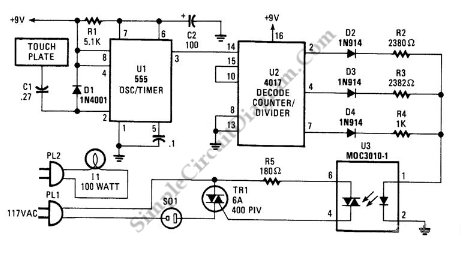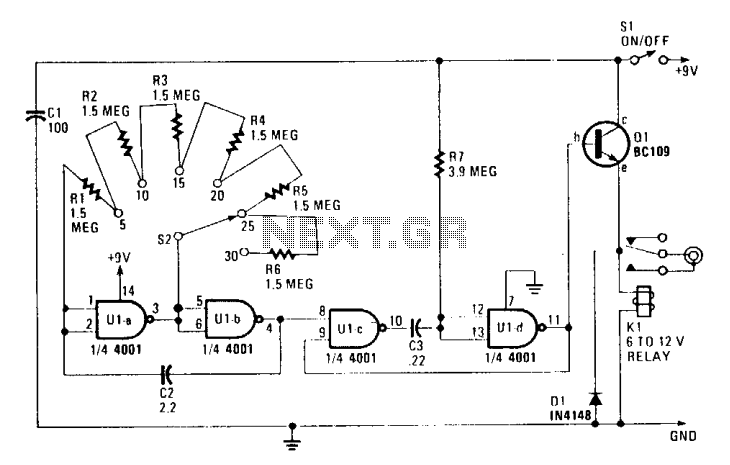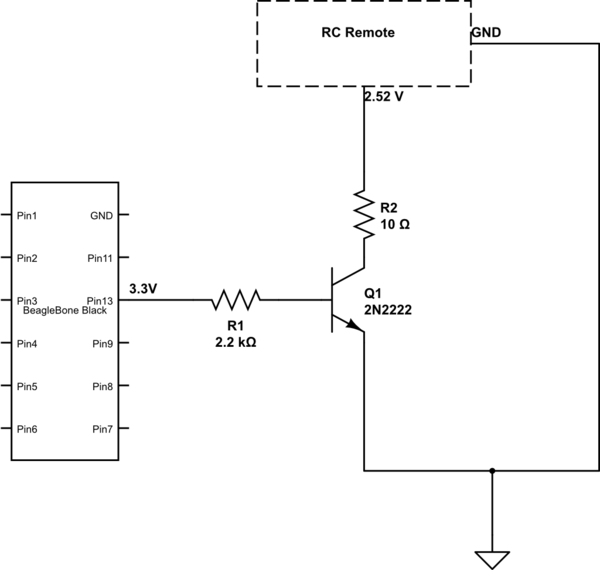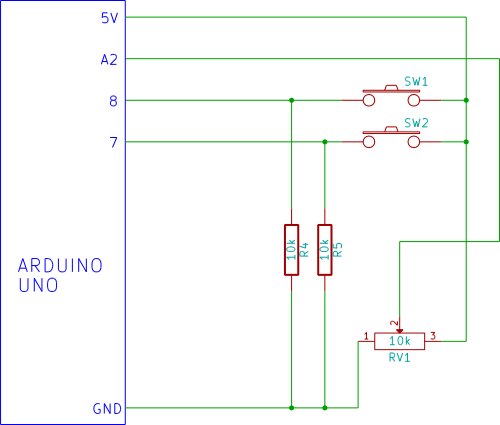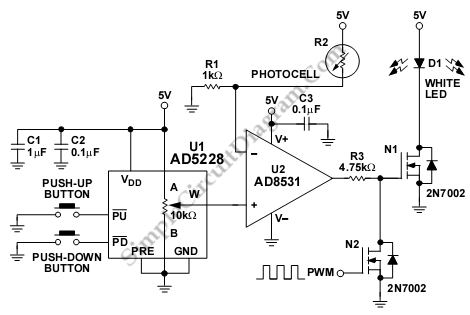
Auto touch switch
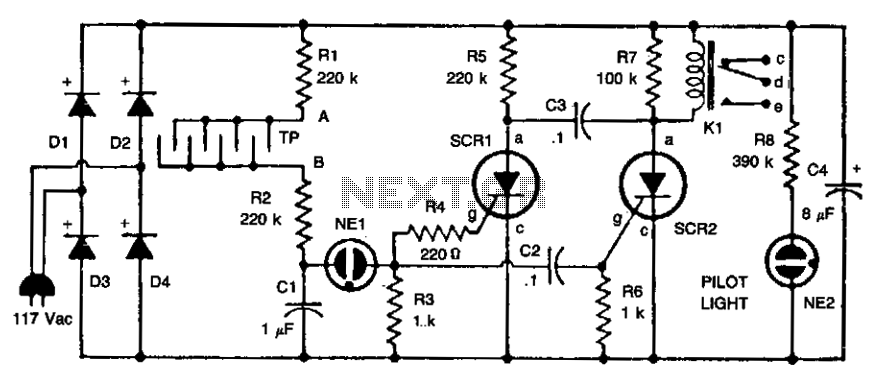
When an individual touches the touchplate (TP), the resistance of their finger between points A and B is added in series with the resistors R1 and R2, causing the capacitor C2 to begin charging. Once the voltage across capacitor C1 reaches a sufficient level to trigger NE1, C1 will discharge. The firing of NE1 creates a short circuit across its terminals. As a result, resistor R3 is effectively placed in series with capacitor C1 after NE1 fires. A voltage spike generated by C2 acts as a positive triggering pulse, which is sent to both gates of the silicon-controlled rectifiers (SCRs). SCR2 conducts, thereby energizing relay K1. Once the finger is removed from the touchplate, no further pulses are generated because the charging path for C1 is interrupted.
The subsequent touch on the touchplate will generate a pulse that triggers SCR1. At this point, SCR2 is turned off due to capacitor C3, which was charged by the current flowing through resistor R6 and SCR2. The activation of SCR1 applies a negative voltage across SCR2, temporarily reducing the relay current below the holding current threshold of SCR2. The holding current is defined as the minimum current required for an SCR to remain in a conductive state after its gate voltage is removed. With SCR2 deactivated, the relay opens, and SCR1 subsequently turns off due to the high resistance placed in series with its anode. This results in SCR1 being deprived of holding current, leading to its deactivation.
The circuit operates by utilizing a touch-sensitive mechanism that relies on capacitive charging and controlled triggering of SCRs to manage relay states. The interaction between the touchplate, capacitors, resistors, and SCRs allows for momentary control of the relay based on user input. When the touchplate is engaged, the system charges the capacitors and allows for the activation of the relay, while the removal of the touch interrupts the circuit, leading to the relay's deactivation. This design ensures that the relay only operates when intended, providing a reliable and user-responsive electronic control system. The inclusion of multiple components, such as resistors for current limiting and capacitors for timing, further enhances the circuit's functionality and stability.When someone touches the touchplate (TP), the resistance of his finger across points A and is added in series to the combination of Rl and R2, the capacitor C2 begins to charge. When the voltage across Cl is finally sufficient to fire NE1, Cl will begin to discharge. When NE1 fires, it produces a short between its terminals. Since R3 is connected across Cl, they are effectively in series after NE1 fires. A voltage spike will then be passed by C2 and this will act as a positive triggering pulse. The pulse is fed to both SCR gates: SCR2 conducts, thereby closing relay Kl. With a finger no longer on the touchplate, no more pulses are forthcoming because the Cl charge path is open.
The next contact with the touchplate will produce a pulse which triggers SCR1. SCR2 is now off by capacitor C3 which was charged by current passing through R6 and SCR2. The firing of SCR1 in this way places a negative voltage across SCR2 which momentarily drops the relay current to a point below the holding current value of SCR2. (Holding current is the minimum current an SCR requires to remain in a conducting state once its gate voltage is removed.) With SCR2 turned off, the relay will open and SCR1 will turn off due to the large resistance in series with its anode.
Starved in this way SCR1 turns off because of a forced lack of holding current.
The subsequent touch on the touchplate will generate a pulse that triggers SCR1. At this point, SCR2 is turned off due to capacitor C3, which was charged by the current flowing through resistor R6 and SCR2. The activation of SCR1 applies a negative voltage across SCR2, temporarily reducing the relay current below the holding current threshold of SCR2. The holding current is defined as the minimum current required for an SCR to remain in a conductive state after its gate voltage is removed. With SCR2 deactivated, the relay opens, and SCR1 subsequently turns off due to the high resistance placed in series with its anode. This results in SCR1 being deprived of holding current, leading to its deactivation.
The circuit operates by utilizing a touch-sensitive mechanism that relies on capacitive charging and controlled triggering of SCRs to manage relay states. The interaction between the touchplate, capacitors, resistors, and SCRs allows for momentary control of the relay based on user input. When the touchplate is engaged, the system charges the capacitors and allows for the activation of the relay, while the removal of the touch interrupts the circuit, leading to the relay's deactivation. This design ensures that the relay only operates when intended, providing a reliable and user-responsive electronic control system. The inclusion of multiple components, such as resistors for current limiting and capacitors for timing, further enhances the circuit's functionality and stability.When someone touches the touchplate (TP), the resistance of his finger across points A and is added in series to the combination of Rl and R2, the capacitor C2 begins to charge. When the voltage across Cl is finally sufficient to fire NE1, Cl will begin to discharge. When NE1 fires, it produces a short between its terminals. Since R3 is connected across Cl, they are effectively in series after NE1 fires. A voltage spike will then be passed by C2 and this will act as a positive triggering pulse. The pulse is fed to both SCR gates: SCR2 conducts, thereby closing relay Kl. With a finger no longer on the touchplate, no more pulses are forthcoming because the Cl charge path is open.
The next contact with the touchplate will produce a pulse which triggers SCR1. SCR2 is now off by capacitor C3 which was charged by current passing through R6 and SCR2. The firing of SCR1 in this way places a negative voltage across SCR2 which momentarily drops the relay current to a point below the holding current value of SCR2. (Holding current is the minimum current an SCR requires to remain in a conducting state once its gate voltage is removed.) With SCR2 turned off, the relay will open and SCR1 will turn off due to the large resistance in series with its anode.
Starved in this way SCR1 turns off because of a forced lack of holding current.

